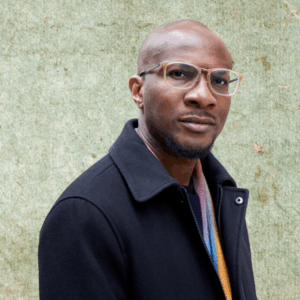
Ancient Astronaut Aryans: On the Far Right Obsession with Indo-Europeans
The Bizarre Pseudo-Historical Belief System Behind White Nationalism
The following essay originally appears in Overland #266.
If you have watched Rob Reiner’s This Is Spinal Tap, you will likely recall the catchy hair-metal song “Stonehenge”:
In ancient times
Hundreds of years before the dawn of history,
Lived an ancient race of people: the Druids.
No one knows who they were,
Or what they were doing . . .
It is true we do not know much about the Druids. We know even less about their forebears, the Indo-Europeans, who truly did live “before the dawn of history.” The Indo-Europeans left behind no Stonehenge, no trace of a writing system, no paintings of themselves or their society. We assume their homeland was somewhere between Eastern Europe and South Asia, but can only guess as to their genetics—did they look Slavic, perhaps, or were they more like Afghans?
Although half the world’s people speak languages descended from theirs, we have no surviving samples of Proto-Indo-European. This has not stopped us from looking: since the 19th century, linguists have tried to reconstruct the ancient tongue by comparing and analyzing its daughter languages. A few online geeks have even created “Modern Indo-European” for daily conversation. I have saved onto my computer a wonderful “practical course” developed by an Italian physicist in his spare time. (In case you are wondering, the Modern Indo-European for “telephone” is “qelibhanom,” while “An esti wifi ghostiljoi?” means “Is there wi-fi in this hotel?”)
Given the above, it would be strange for someone to turn to this phantom prehistoric culture for answers to modern political problems. But, as Umberto Eco pointed out, the far right has a special fondness for “primeval truth.” Blank canvases are a boon to mythmakers, and the Indo-Europeans—sometimes, less accurately, called Aryans—have provided a convenient tabula rasa for 160 years of racist idealism. As we will see, even today’s alt-right does not know how to quit them.
The grandfather of all Aryan race theorists was French aristocrat Count Arthur de Gobineau. In 1853, he published a 1400-page tome, An Essay on the Inequality of the Human Races, promising to diagnose “the mortal disease of civilizations” and explain how societies collapsed. He began, sensibly enough, by ruling out declining morals; the canker was not “fanaticism,” “luxury” or “irreligion.” Plenty of nation states had also survived bad governments. This might lead us to think that history is complex, that superpowers can rise and fall for hundreds of different reasons and that not even experts can reliably predict their lifespan. But rather than complicate geopolitics, Gobineau reached for a less logical conclusion.
His hypothesis was that every major civilization had been created by white Aryans; if the Aryan stock became “diluted” by other groups, the civilization would go into decline. Ancient Egypt was “an Aryan colony from India.” China was, too, before it “became absorbed in Malay and yellow races.” Also originally white, according to Count Gobineau, were “the Assyrians, with whom may be classed the Jews.” This list ran all the way to “the three civilizations of America, the Alleghanian, the Mexican and the Peruvian.”
Gobineau brutally concluded that non-Aryans were incapable of forming advanced societies:
In the above list no negro race is seen as the initiator of a civilization. Only when it is mixed with some other can it even be initiated into one.
Similarly, no spontaneous civilization is to be found among the yellow races; and when the Aryan blood is exhausted stagnation supervenes.
For Gobineau, this argument had its conveniences. Faced with any evidence of non-white civilizations, he could claim that white people had created them and then vanished. His evaporating “Aryans” were not unlike the “ancient astronauts” that UFO loons credit with building the Pyramids.
Such vagueness made his theory highly adaptable. In his book Black Sun: Aryan Cults, Esoteric Nazism and the Politics of Identity, Nicholas Goodrick-Clarke charts the various ways this theory has been interpreted and deployed. While Nazi thinkers backed a genetic model of race, their Italian counterparts, such as influential fascist philosopher Julius Evola, developed a more esoteric reading. Discussing Arthur de Gobineau’s racial thought, Evola asserted that races only declined once their spirit failed. Evola actually rejected Alfred Rosenberg and other biological racists of the Third Reich, implying that their physical anthropology was based on reductionist and materialist science.
Gobineau had written his book before Charles Darwin published his theory of evolution. He had claimed the Germanic peoples were of purer Aryan stock than other Europeans—not for any German nationalist leanings, but because he believed that France’s nobility was descended from Germanic Franks (the common people, on the other hand, were said to be of Gaulish origins). He was not too fixated on Jews; in fact, he more aggrieved by the bourgeoisie and underclasses that had toppled the Ancien Régime.
But this context of royalist class warfare was quickly forgotten. The “Aryan race’ became whatever each right-wing sect wanted it to be. The Nazis made it a conduit for nationalism and populism, fusing it with anti-Semitic conspiracy theories. Evola added his own idea of “spiritual races,” incorporated jargon from yoga and alchemy. He also ignored Gobineau’s disdain for modern Italians and started using the term “Aryan-Roman.” Today, the Aryans are invoked by numerous motley groups from New Ager neo-fascists in Europe to “race realists” in the United States, whose language is only a few steps rightward of Richard Dawkins.
People of any political persuasion can be racist, but white nationalists are their own unique brand. White nationalism is not just a prejudice—it is a full-scale belief system that considers race to be the hidden root of societal ills. More precisely, white nationalism is a vitalist ideology: it pictures society as an organism sustained by a life force, an invisible oomph. Not all vitalism is racist. We find forms of it when people attribute economic success to vague abstract energies such as the startup spirit or Ayn Rand’s “motor of the world.” There’s even a type of vitalism in the technocratic-centrist idea of “knowledge economies.”
“White nationalism is not just a prejudice—it is a full-scale belief system that considers race to be the hidden root of societal ills.”
A non-vitalist might grasp that corporations and empires become “great” from the power vacuums and opportunities that appear around them. Whatever asset made a superpower “great” in one century could be useless in the next, and vice versa. Blockbuster Video was not eclipsed by Netflix because it had lost some primal quality—but this is how vitalist reactionaries frame such issues. For white nationalists, the primal quality is whiteness. All of their political “solutions”—segregation, separatism, immigration barriers—hinge on the assertion that white people are fundamentally different. Fantasies about prehistoric Aryans exist to fill this ideological need.
This begs the question of how white people are different. It is in the answers that Gobineau’s offspring show their full diversity.
A much flaunted feature of alt-right white nationalists is how little they resemble stereotypes of blue-collar skinheads or unlettered rednecks. Rather, they hail from the same wealthy, ivory-tower backgrounds as the elite liberals they claim to oppose. Their top magazine, American Renaissance, was founded in 1990 by Jared Taylor, a Yale graduate who began his media career at the Washington Post. Richard Spencer, the latest “dapper” poster boy of white nationalism (and now the internet’s most meme-able Nazi), holds an MA degree from the University of Chicago and devoted two years to an abortive PhD at Duke. Their holiest book, Charles Murray’s The Bell Curve—which claims that the welfare state “encourag[es] the wrong women” to have babies and makes alarmist predictions that a low-IQ underclass will outbreed the high-IQ elite—was also praised in liberal organs like the New York Times and by “Team Hillary” stalwart Andrew Sullivan.
The alt-right is the prodigal son of elite liberalism, and nothing shows this more clearly than its racial thinking.
In “The Ways of Our People,” a 1996 essay for American Renaissance, Jared Taylor tries to tackle his movement’s basic questions: “How are the white man and his civilization unique? Why do they deserve our loyalty?”
Taylor’s answer is surprising:
Neither the Japanese nor the Mexicans nor the Malays nor the Israelis tolerate alien incursion, displacement or “multiculturalism.” They fight them instinctively, without having to explain to themselves why they must fight them and why they must survive as a people. Only whites pretend that pluralism and displacement are good things and that the measures necessary to ensure group survival may be immoral.
White people, he argues, are distinguished by their “concern for others,” their “altruism,” their “noblesse oblige.” They take pains to protect wildlife, whereas non-whites have a “strictly utilitarian, even exploitative attitude toward animals.” He also claims a fundamental distinction in the treatment of women: “Only in the West was the objectively weaker sex elevated and protected through an elaborate code of chivalry.’”Taylor even claims that “the welfare state is an almost exclusively white enterprise.” In contrast to other races’ pragmatism, white societies “have treated non-white nations with remarkable forbearance” and their ‘inherent racial traits’ also make them prone to “capitulation.”
The only word missing is that recent alt-right favorite: cuck. Yet Taylor’s white race is not just emasculated, it is also feminized. Whiteness, to him, is virtuous, dainty, sensitive and impractical—and for these reasons, worth venerating on a pedestal. Crucially, Taylor (unlike earlier Nazi German theorists) did not position whites as an assertive “Herrenvolk” who have been softened by “Jewish influences.” Instead, he argues that “altruistic inclinations that are probably inherent in whites” have become “perverted” into egalitarianism and multiculturalism.
The Ancient Romans and Spartans might have shuddered to hear they were chivalrous to women and soft on their foes.
What Taylor’s essay reveals is that liberal truisms were so pervasive during the Clinton era that even white supremacists mistook them for timeless, intrinsic values. Taylor’s picture of non-white cultures is also a consequence of the late 20th century. If Mexicans and Malays “instinctively” hated “alien incursion,” national liberation movements against colonial rule would have formed centuries earlier. Today we can take the existence of Mexican and Malaysian nationalism for granted, but neither one was a thoughtless impulse. Someone, at some point, had to invent them and popularize them. If nationalism proceeded organically from race, we could also ask why there is so much sabre-rattling between Malaysia and Indonesia, or between India and Pakistan—countries whose boundaries and national identities did not exist before colonialism.
Taylor’s presentism drew immediate rebukes from his own camp. Samuel T. Francis, another American Renaissance contributor, wrote that “Mr. Taylor’s catalogue of white racial traits . . . strike me as being largely modern.” Under the pseudonym “Edwin Clark,” Francis wrote a follow-up essay: “The Roots of the White Man.” By studying “common features of archaic Indo-European peoples,” he hoped to unearth the “deeper traits” of white people and “discover more profoundly who we are.” But while Francis drew most of his examples from the Greeks, Romans, Germanics and early Indians, his Aryans are nonetheless a product of the 1990s.
What comes first on Francis’ list of supposed Aryan traits? “It is a widespread feature of early Aryan thought that there exists an objective order that is independent of what we believe or want to believe—in other words, truth.” This is a strange thing to highlight. The idea of objective truth is hardly unique to Indo-European cultures. But Francis was writing in the heyday of post-structuralism, when it had to be emphasized that the Aryans were no fans of Derrida.
Like Taylor, Francis tries to bind whiteness to a notional form of liberal humanism—in his case, turning the Aryans into would-be Alan Sokals. He contrasts their “objectivity” with the “non-Aryan, magical view of nature,” wherein “Cosmic Order is merely the product of will”: “if the priests or the divine king did not perform the proper magic rituals, the sun literally would not rise, the Nile would not flood, and food would not grow.” How this makes the Egyptians more relativist than the Romans (who also performed agricultural magic) is not clarified. At best, while admitting that “early Aryans did believe in and practice magic,” Francis claims that their worldview was not “dependent on magic” and that they saw “nature exist[ing] apart from the tricks of the magicians and sorcerers.” But that could be true for most cultures that practice sympathetic magic. Science and mysticism were not fully separate fields in the pre-modern world. It was only in the 1700s, for example, that chemistry unhitched itself from alchemy.
“Alex Jones-style ‘constitutionalists’ revere the early American republic as an unspoiled Avalon, treating its constitution not as a white paper authored by mortal men but as something closer to the Ten Commandments or Holy Grail.”
Francis’ take on the Aryans is virtually the opposite of how they are viewed currently by a large section of the European far right. In The Yoga of Power, Evola struck out at empirical science, promoting esotericism instead: “That which does not depend on the laws of nature, but which rather bends, changes and suspends them, is a different kind of power. It is a direct acquisition of a few superior beings.” To Evola, the Aryans were not great because they kowtowed to an “objective order” but because they developed yoga and the “Royal Art” of alchemy, magical practices he believed could allow “aristocrats of the spirit” to surpass objective limits. Science earned Evola’s disapproval, since its gifts were too readily democratized:
A handgun will produce the same results in the hands of a lunatic, a soldier, or a great statesman; in the same sense, anyone can be transported in a few hours from one continent to another. We may well say that this “democracy” has been the leading principle in the systematic organization of modern science and technology. As we have seen, the real differentiation of beings is the condition for an inalienable knowledge and power, which cannot be transferred to others; they are exclusive and “esoteric,” not artificially, but by virtue of their very nature.
Francis, being an American paleocon, still pays lip service to democratic government, claiming that “a limited democracy” with “its tendency to separate the sacred from the secular’ has ‘deep racial and cultural roots among Europeans.” His essay gives us this astonishing passage:
Some scholars believe that the tripartite structure of Indo-European society survived into medieval Europe with the division of society into “those who work, those who fight, and those who pray,” and it may also be reflected in the division of political functions into executive, judicial, and legislative in the U.S. Constitution, and even in the Christian idea of the Trinity.
As silly as it seems to link the US constitution to the ancient Indo-Europeans, it fits a common thought pattern for the American right. To the rest of the world, America’s founding fathers might be modern figures belonging to an age of skepticism and upheaval. Within the US, however, they have drifted halfway into primal myth, alongside Moses or King Arthur. Alex Jones-style “constitutionalists” revere the early American republic as an unspoiled Avalon, treating its constitution not as a white paper authored by mortal men but as something closer to the Ten Commandments or Holy Grail. This mythologizing occurs throughout the right, from sovereign citizen militias to Supreme Court “originalists” like the late Antonin Scalia. What counts as “primeval truth” is, then, so relative it does not even have to be pre-modern.
The American alt-right favors a more utilitarian, technocratic language than its European far-right cousins, but its belief system is no less mystical. Even when couched in social science concepts like IQ, it retains the airy promise of a cure-all tonic. In a post from Richard Spencer’s National Policy Institute, we read:
[T]here are few, if any, constructs in the social sciences more powerful than IQ. It correlates with and predicts an extremely wide range of social phenomena including, but not limited to, school and economic performance, criminal behavior, differences in wealth between nations, and demographic groups within nations. [. . .] Among elite opinion makers, however, the importance and predictive power of IQ is denied, as is the idea that it is genetically based.
It is a vitalism of mind over matter, or rather of IQ over matter. Here, alt-righters do not differ much from their liberal elite enemies. Liberals yearn for rule by those who are “qualified” and disparage “low-information” plebs for keeping America down. Alt-righters, meanwhile, blame an ethnic minority underclass, believing that the sinking ship might float again if its passengers were whiter, better segregated and quicker at Lumosity puzzles. Neither group cares much for the systemic problems of capitalism. Instead, they pin everything on personal virtues: if only better people filled so-and-so positions, the system would be better too!
How should we respond to the spread of “race realist” arguments? Moral condemnation is not enough; it does not faze alt-righters to be called “racist.” Their ideology already assumes that racism is true, so accusing them of it is like accusing a Trot of being unpatriotic. What is more likely to give the “redpilled” pause is the suggestion that they are being naïve, that their newfound politics is just as gullible as the liberal “cuck programming” they have allegedly shed, that race realism is not a suppressed Grand Theory of Everything but a useless red herring.
Arguments against the alt-right should not defend the political establishment, but rather point to better ways of understanding and fighting that establishment than through inane theories about “cultural Marxism” or bygone Aryan cultures whose virtues nobody can agree on. Virtues are too trivial a basis for a politics that aims to do anything productive, and that includes “racial” virtues.
Ramon Glazov
Ramon Glazov is a Perth-based writer and journalist. His writing has appeared in Jacobin, The Monthly, and The Saturday Paper. He is the translator of Giorgio De Maria’s The Twenty Days of Turin (Liveright, 2017).



















